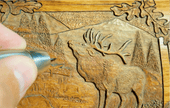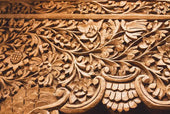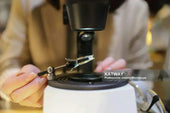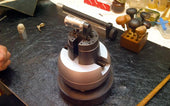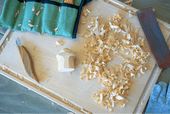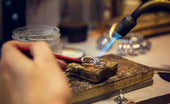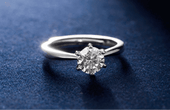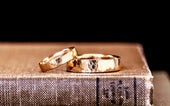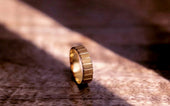About the Identification of Real and Fake Pearls
Pearls are an ancient organic gemstone that existed about 200 million years ago and as such have been used in jewelry making for a very long time. This particular gemstone, the pearl, is said to represent purity, health, wealth and happiness. Nowadays, more and more young women are attracted to pearl jewelry because wearing it on the body can greatly highlight a woman's sensibility and elegance.
There are also many types of pearl products, such as pearl cosmetics, pearl powder, pearl nude beads and so on. Pearl products look similar, for ordinary consumers to identify the difficulty has gradually become higher, many unscrupulous merchants will take the opportunity to sell to consumers who do not understand the pearl, in order to profit. In response to this situation, today we bring you 5 ways to identify the real pearl. The following methods are very practical, you can choose the appropriate method according to your own interest or convenience.

1. Visual Identification
The so-called visual identification method, to put it simply, is to directly observe the pearl with the naked eye. The main thing is to see whether the shape, size and luster of the pearls are the same. Pearls are one of the products of nature, they are all different in appearance, basically there is no pearl in the world looks exactly the same. Although the pearls that are selected for jewelry are similar in color, size and shape, they are never identical. In addition, natural pearls will have some small naturally occurring imperfections, and the imperfections on the surface of the pearl are visible to the naked eye. Let's talk about the characteristics of artificial pearls, which are all exactly the same size, and they all look smooth on the surface, not to mention that there will be variations in color. However, there is a special case here, some of the black pearls as well as South Sea pearls have flaws that are basically invisible to the naked eye.
2. Look at the shape of the pearl
Generally speaking, real pearls do not have a particularly regular shape, while artificially made pearls, they are all very round in shape and very similar in size. Pearls formed under natural conditions are in rare cases very well proportioned in luster and size, but the price of pearls of this color is usually over hundreds of thousands of RMB, which is very difficult for the average person to buy. Again, it is the luster of the pearl. Pearls formed under natural conditions have layers of luster, and if you look closely at the pearl from different angles, the luster of the pearl will be different because of the different angles. Sometimes you can also see rings on the pearls, which are traces left on the pearls by the power of nature.
3. Hand feeling method
Good pearls, their feel in the hand is very special. Even in the very hot summer, pure natural pearls have a distinctly cool feeling when held in the hand. And saltwater pearls and freshwater pearls are also different, because the growth environment of these two types of pearls is different, therefore, there is still a relatively big difference between them. Although, both saltwater pearls and freshwater pearls feel cooler to the touch, saltwater pearls will feel cooler to the touch compared to freshwater pearls. Artificial pearls are a different story, as they are very sticky to the touch. In addition, you can also take out two pearls to rub, if you feel a kind of abrasive feeling or rough feeling, and also rub out the pearl powder, this is the real pearl. If you rub off the pearl powder, the luster of the pearl will come out again, which is a characteristic that fake pearls do not have.

4. Magnified observation method
Magnified observation method, is to enlarge the details of the pearl to observe, after all, some of the fake pearl production process is very high, the naked eye can not see any difference. This time we need to use a stereo microscope to observe the pearls in detail. Here, with the aid of a microscope that magnifies 7x to 90x, you can observe the growth pattern on the surface of the pearl, and you can also see the growth of calcium crystals. Virtually every pearl is an organic product of nature, and their patterns vary. The patterns of pearls can probably include the following, such as swirls and parallel lines. Of course, there are some pearls that have a very smooth surface without any stripes. Fake pearls, on the other hand, will appear as uneven shapes under the microscope.
5. Listening to the sound
One last thing you can do is to listen to the sound of the pearl with your ears. You may wonder where the sound of pearls comes from. The way to listen to the sound of pearls is to take the whole strand of pearls out and shake them in your hand a few times. If the sound you hear is very harsh, then it is definitely a fake pearl. The sound of a real pearl is very soft and even soothing when struck between them.
In addition, there is a very special way that you can also bite the pearl with your teeth. Real pearls do not have a smooth feel when you bite them, instead they have a bumpy feel and a white powder appears. Imitation pearls are very smooth when you bite on them, and when you bite on them hard they will also have dimpled teeth marks, and the coating on the surface will come off. If it's a glass pearl, it's much better to recognize because you can't bite into it at all.
View more related articles
How to Set a Faceted Stone in a Tube?
Craft a Pendant from Scrap Silver
The secret of Katway 3 in 1 Jewelry Engraving Machine









